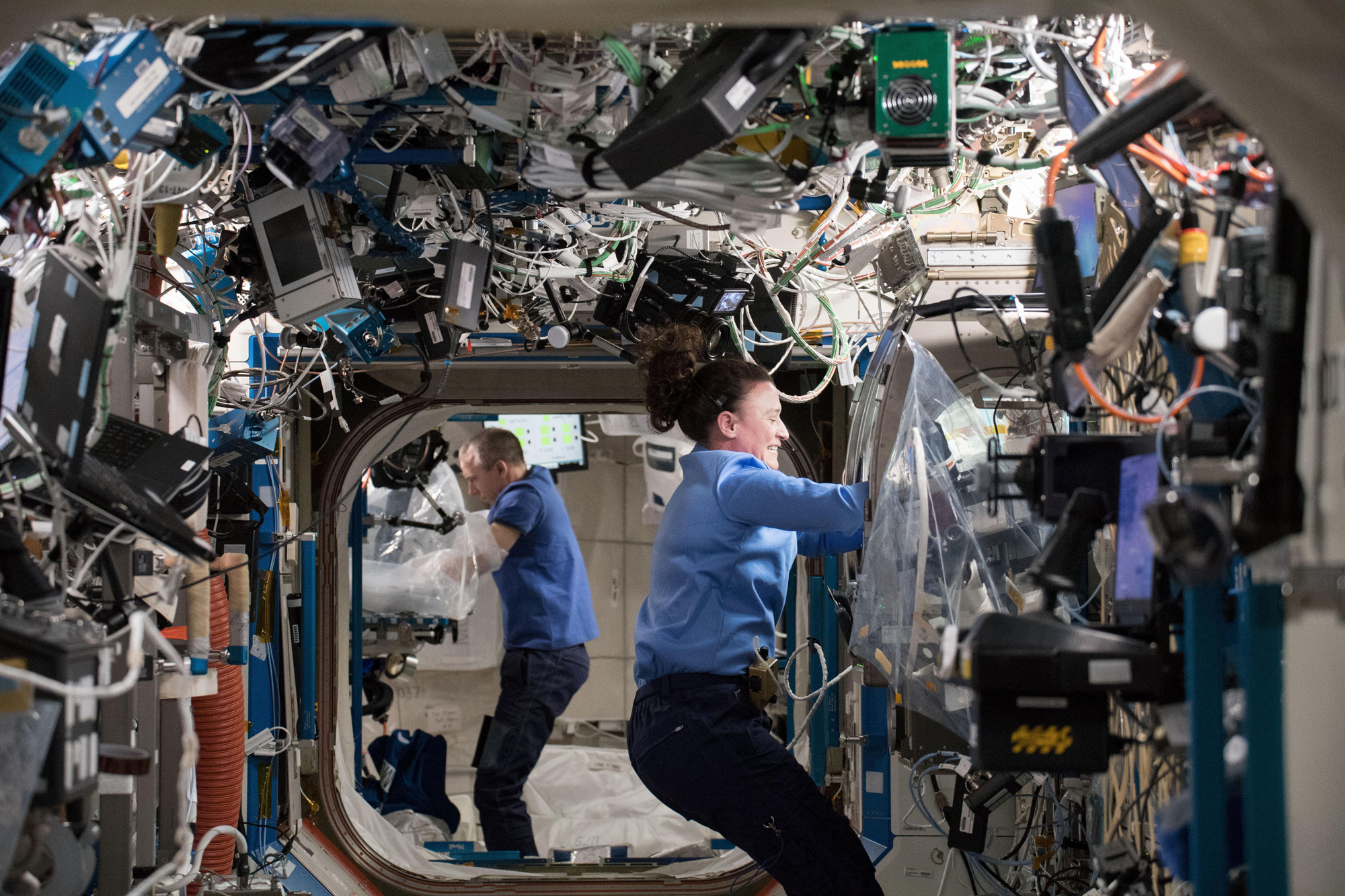This Is How NASA's Trying to Find Better Cancer Treatments in Space (Video)
With careful attention from an astronaut, a blood cell experiment may deliver improvements on cancer-fighting treatments.
There's a lot of blood in space right now — to be exact, there are a lot of endothelial cells that come from blood vessels. Astronauts are helping study these cells aboard the International Space Station (ISS) as part of the Angiex Cancer Therapy trials, which NASA astronaut Serena Auñón-Chancellor introduced in a new video published by NASA on Tuesday (Aug. 21).
An Expedition 56 crewmember, Auñón-Chancellor arrived to the space station earlier this summer. She'll spend the next few months on the station, a space lab where crewmembers support and communicate with researchers here on Earth to run experiments. [Breathtaking Time-Lapse Video Shows Earth from International Space Station]
Why take a blood experiment into space? Sometimes, cells act differently in the weightless environment of orbiting spacecraft, called microgravity. And according to a NASA page on the research, endothelial cells housed within culture dishes (in vitro) in microgravity seem to perform as if they were in blood vessels within a living organism (in vivo) on Earth.

Because these orbiting cells perform more like they normally do inside the body, cancer researchers can more accurately test the cells for chemotherapy responses.
Several cartridge-shaped containers on board the International Space Station currently host the cells as they undergo varying amounts of chemotherapy exposure. The study may lead to new testing models for Angiex researchers, too.
"The study may facilitate a cost-effective method that does not require animal testing,which may help develop safer and more-effective vascular-targeted drugs," the project page reads.
Get the Space.com Newsletter
Breaking space news, the latest updates on rocket launches, skywatching events and more!
In the video, Auñón-Chancellor said the flat endothelial containers feel "all nice and warm and comfortable," because they are kept at body temperature aboard the space lab. "We've had them for almost two months now up here in ISS. We feed them. We give them nutrients … they are like miniature crewmembers living with us."
Follow Doris Elin Salazar on Twitter @salazar_elin. Follow us @Spacedotcom, Facebook and Google+. Original article on Space.com.
Join our Space Forums to keep talking space on the latest missions, night sky and more! And if you have a news tip, correction or comment, let us know at: community@space.com.

Doris is a science journalist and Space.com contributor. She received a B.A. in Sociology and Communications at Fordham University in New York City. Her first work was published in collaboration with London Mining Network, where her love of science writing was born. Her passion for astronomy started as a kid when she helped her sister build a model solar system in the Bronx. She got her first shot at astronomy writing as a Space.com editorial intern and continues to write about all things cosmic for the website. Doris has also written about microscopic plant life for Scientific American’s website and about whale calls for their print magazine. She has also written about ancient humans for Inverse, with stories ranging from how to recreate Pompeii’s cuisine to how to map the Polynesian expansion through genomics. She currently shares her home with two rabbits. Follow her on twitter at @salazar_elin.
